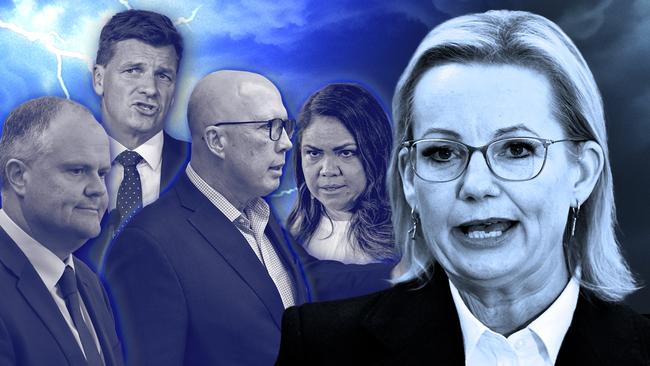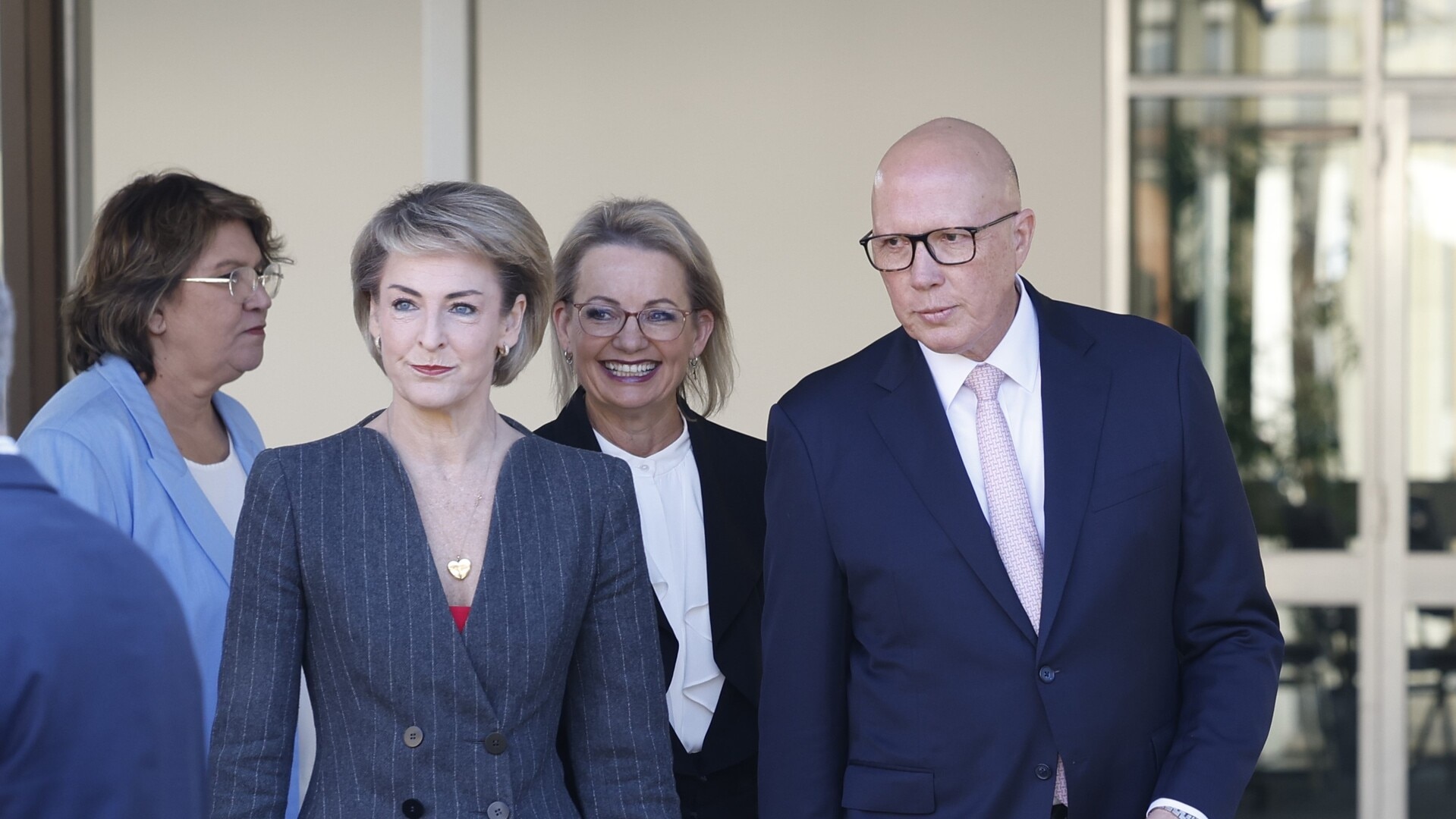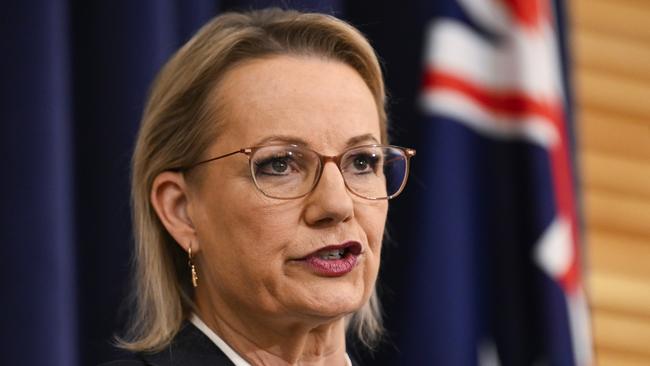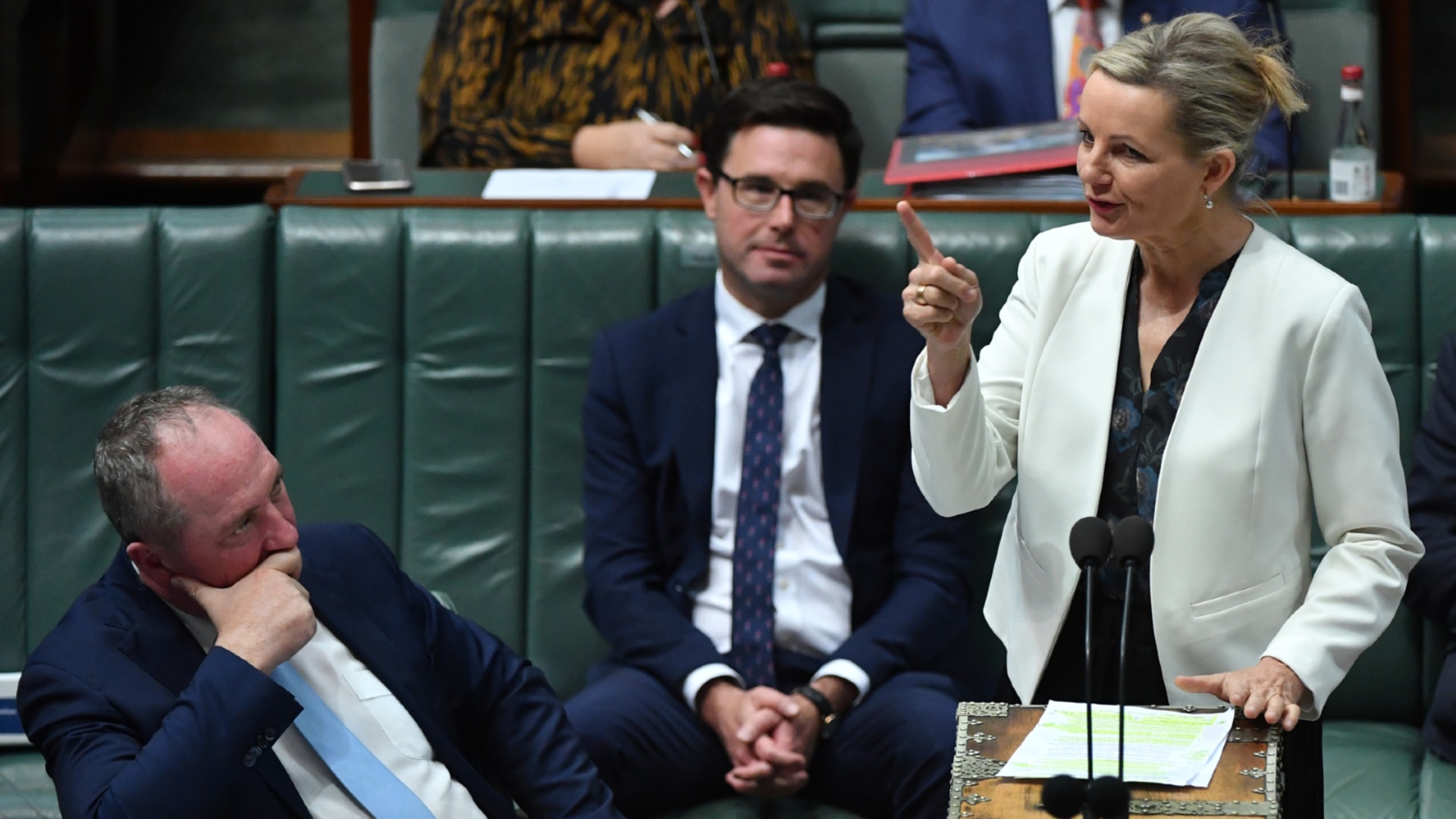Does the Liberal Party understand the full extent of its gender crisis?
Sussan Ley’s decision to dump four senior women from the frontbench – including education shadow Sarah Henderson – has raised eyebrows. Not only has it sent mixed signals, but it also has raised deeper questions.

The Liberal Party is facing a cultural, structural and social challenge with female voters. It has been a long time in the making, a dilemma that has come to define the party as a political outfit in the wake of its shattering election defeat.
From the 1950s to the 80s, the gender voting gap in Australia was profound: significantly more women than men voted for the Coalition. Australian women were far more conservative than men, but also far more conservative than the generations that have followed since.
By the early 90s to the early 2000s, this gap began to converge and started to chart in the opposite direction. Today, not only is this shift evident, it also is actively shaping a second political dealignment within centre-right politics.
Female voters are more progressive and it is men who are now far likelier to vote for conservative parties. That the Coalition has won elections against this tide during the past decade may have given it a sense of complacency.
But it is not a phenomenon unique to Australia. It is a trend that has occurred in the US, Britain, Europe and most of the democratic West.
In Australia, it is one of the more profound challenges facing Sussan Ley.
Ley says it is significant that she has become the first woman to lead the federal Liberal Party. But she is not blind to the realignment that needs to be undertaken.
“I believe the Liberal Party has the right values to reconnect with a broader range of women,” Ley tells Inquirer. “I know if we put those values into action we can develop the right policies to help women navigate the relentless pressures of the 21st-century economy and the concerning impacts of the digital age. But there are no shortcuts to regaining the trust of women and there are no silver bullets either. This is going to take a fresh approach and consistent engagement, and my team and I are up for the task.”
The warning signs have been evident for decades. This made the decision to go to the 2025 election without a women’s policy agenda even more bizarre.
Former Liberal senator Amanda Vanstone recalls a chance meeting inside Parliament House at Aussies cafe in the early 90s when she, former Victorian Labor premier Joan Kirner and Democrats leader Cheryl Kernot sat together at one of the intimate tables usually occupied by politicians and rent-seekers during parliamentary sitting weeks.
There the group of three made a non-monetary wager to pick the most stupid and ill-qualified male member of parliament from their opposing sides. Vanstone doesn’t recall the outcome of that straw poll but makes the point that it still remains valid today. There were too many to choose from.
“We all agreed that there wouldn’t be a woman in parliament that was dumber than them,” Vanstone, the former family services minister, recalls. “The problem with getting more women in is there are too many stupid men in there who won’t get out of the way.”

Chris McDiven, president of the federal women’s committee of the party, is credited with driving more female candidates into the field ahead of the 1996 election. Two years later, it was the female vote that saved the Howard government at the 1998 election. Of the nine most marginal seats the Coalition held on to, to retain government at that election, five were held by female candidates.
Since then, the two major parties have demonstrated an electoral illiteracy about what is happening in society. For the Liberal Party, there was a light-bulb moment in the post-2022 election review in the aftermath of what was then the party’s worst loss since its formation. The report – authored by former party director Brian Loughnane and Victorian senator Jane Hume, who was dumped this week from shadow cabinet by Ley – alluded to the trend that had become apparent since 1996. The key recommendations of the report to address this problem were adopted.
“Of particular concern in the results is that in seats with high numbers of female professional voters, the Liberal Party only holds three of the top 30 seats where previously it held 15,” the report said of the 2022 election loss. “In the top 50 seats by female professionals, the Liberal Party only holds 10 seats where previously it held 25.”

The report found most women preferred Labor in all age segments. While the two-party vote was weakest among 18 to 34-year-old women, it was women aged 35 to 54 who were the likeliest segment to shift away from the Liberal Party and vote independent.
The 2022 result produced the lowest number of Liberal women in the party’s parliamentary ranks since 1993, with only nine women in the lower house. The 2025 result has weakened this further. There will be only seven women representing the Liberal Party in the lower house in the new parliament.
One could argue that women performed better than men in holding on to their seats this time, considering the scale of seats lost slightly increases the female-male ratio; yet because the 2025 election result suggests the party has a problem with all voters, not just female voters, the gender divide has been an easy fact to overlook.
There was also conflicting data in the demographic polling that did not suggest a crisis among female voters – except that they might have been unenthusiastic about Peter Dutton.
On the contrary, support for Labor among women was at a record low, with only 29 per cent of female voters nominating Labor as their first preference, according to a demographic breakdown of Newspoll data for the first three months of 2025.
This was widely read as an acute reaction among female voters to cost-of-living pressures. There is some truth to this; yet there was a tendency to misread it as an endorsement of the Coalition rather than anger at the Albanese government.

In particular one data point should’ve been an obvious warning sign for the Liberals and Nationals: at the 2022 election 16 per cent of female voters backed the Greens. A deeper dive into the Newspoll demographics from the January to March quarter this year suggests that of those aged between 18 and 34, the number was closer to 30 per cent.
What should have been obvious is that the Liberal Party did have a significant problem with women, particularly among those under 40.
Labor’s health scare campaign against Dutton, the Donald Trump factor and the work from home policy made what was already an underlying problem for the party with women an acute one for the election.
Sydney Liberal MP Melissa McIntosh, whom Ley has appointed as opposition spokeswoman for women, says the party’s fundamental principles should remain appealing to women.
“I will do whatever I can to bring Australian women along with us as we are forming policies,” McIntosh tells Inquirer.
“Equality of opportunity is one of our Liberal Party beliefs and I think that would appeal to many women. We need to make sure we are communicating that through our policies.
“We need to be deeply focused on the issues impacting women, including online safety in my communications portfolio. “The only way we’ll have policies that appeal to Australian women is by working closely with them, listening to their concerns and understanding their aspirations. This means women right across Australia: in our cities, suburbs, and regions.”
There is now a fundamentally different problem to the one Vanstone described from three decades ago, which for a party suffering an apparent gender crisis makes Ley’s decision this week to dump four senior women from the frontbench – including education shadow Sarah Henderson – a decision that has raised eyebrows. Not only has it sent mixed signals but it also has raised deeper questions about whether the underlying problem is yet fully understood by the party leadership.
The solutions to the problem are vexed, and there has been a tendency to misalign the prescriptions to the problem that needs to be treated.
The loss of economic ownership was central to the Liberal Party’s defeat at the 2025 election. Where it once had a 25-point advantage, at the last election there was no tangible difference between the Coalition and Labor. Yet this trend has been slipping away for conservative parties across the past three elections.

But the bigger trends remain gender, generation and university education.
“There have been three major changes,” says Ian McAllister from the Australian National University, who conducts the Australian Election Study.
“It is generation, university education and gender. These are long-term changes that are happening from election to election a bit more each time, but they are working away so the fundamental basis of the parties are changing. The alignment between the parties and society is becoming fractured.
“What we know from international literature is that at some stage there will be a realignment so the parties will have to realign themselves with these fundamental social divisions. They haven’t yet come to terms with that.”
The problems of realignment are, of course, not confined to the Liberal Party but they are more apparent.
“Many more women vote for the Greens than vote for any other party,” says McAllister, whose most recent hypothesis combines data from the ANU’s own election study with recent aggregated Newspoll data.
The work on the 2025 result won’t become available until October, but the 2022 AES also pointed to the gender issue.
“Women increasingly prefer parties on the left, and men parties on the right,” it said. “The gender gap in voting for the Coalition peaked in 2016 and 2019, with 10 per cent more men than women voting for the Coalition.
“In 2022 the gap narrowed slightly, not because the Coalition did better among women but because they lost votes from both men and women. “The Coalition vote among men dropped nine points from 48 per cent in 2019 to 39 per cent in 2022, while the Liberal vote among women dropped six points from 38 per cent to 32 per cent. A small gender gap in the Labor vote has persisted from 2016 to 2022 of up to 4 per cent, with slightly more women voting Labor.”
McAllister says of the longer-term trend: “There is a big gap there and we have seen that increasing particularly among younger voters and women … and again it has been happening around the world.
“We see it in Europe and to some extent in the US where women were much more likely to back independents. There is something happening among younger women, they are becoming more progressive. There are fundamental changes which are driving women to the progressive end of politics.”

McAllister says the drivers of these changes include secularisation, the declining influence of religion; women more likely to be the head of one-parent families; dramatically larger numbers of women going to university; and greater labour force participation.
Additionally, there are now many more women who were members of a union, aligning them to the left of politics.
“The gender gap … it really has changed over time … women were significantly more conservative if you go back to the 60s, 70s and 80s.
“And now you see the modern gender gap where women are more likely to be progressive rather than conservative.”
But he sees university education as just as significant issue as gender alone for the major political parties.
“University education is important … going back 30 years there were still many more men than women going through university education.
“Now among younger generations it is many more women going through than men.”
The gender problem for the Liberal Party is at least recognised by senior male figures in the party. And, as Vanstone says, liberalism should not be unappealing to progressive women.
The challenge is to reimagine the party and harness its ability to market the notion of aspiration and freedom to younger generations of women.
“Women are the flag-bearers of the plurality of the age,” one senior male Liberal MP says.
“The period of the 50s and 60s was a conservative one and driven by the churches. But are women now inherently progressive? Not necessarily.
“Aspiration should not be alien to them. And it is aspiration that has to be retargeted at women.”

Vanstone, who also served as John Howard’s minister for the status of women, points to the wealth equation that has shaped the cultural and political changes, defined by two leaps forward.
Citing US author Samuel Robertson’s 1995 work, The Good Life and Its Discontents: The American Dream in the Age of Entitlement, Vanstone agrees there must be a realignment of the Liberal Party to changes in society.
“The short form was that the Pill was invented and women could choose how many children they had more easily, they chose to have less, but not because they didn’t want more but they were driven by a desire by each generation wanting to give the next more than they had,” she says.
“Then they went into the workforce, which again meant more wealth per child. “What’s the next thing that creates more wealth for families … we can’t see what that is. It’s not obvious that there is another structural change around the corner that will give more wealth to families. That has had an effect on what people expect.”
Ley insists being the first female leader of the party will bring a new perspective to the problem.
“As a woman leader, I will make the big calls as Opposition Leader about the things that matter to women, because I’ve been a mum struggling with paying the bills, with worrying about the kids, with all the work-life balance and bringing that perspective to the decisions that we make, when it comes to policy and when it comes to being that strong opposition, is incredibly important,” she said in a morning television interview this week.
“Of course, I want to see more women in our party, every single day I will, and I hope that my appointment sends that signal.”




To join the conversation, please log in. Don't have an account? Register
Join the conversation, you are commenting as Logout